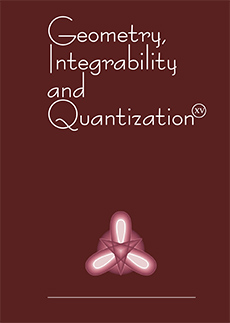Abstract
Relativistic hyperbolic geometry is a model of the hyperbolic geometry of Lobachevsky and Bolyai in which Einstein addition of relativistically admissible velocities plays the role of vector addition. The adaptation of barycentric coordinates for use in relativistic hyperbolic geometry results in the relativistic barycentric coordinates. The latter are covariant with respect to the Lorentz transformation group just as the former are covariant with respect to the Galilei transformation group. Furthermore, the latter give rise to hyperbolically convex sets just as the former give rise to convex sets in Euclidean geometry. Convexity considerations are important in non-relativistic quantum mechanics where mixed states are positive barycentric combinations of pure states and where barycentric coordinates are interpreted as probabilities. In order to set the stage for its application in the geometry of relativistic quantum states, the notion of the relativistic barycentric coordinates that relativistic hyperbolic geometry admits is studied.
Information
Digital Object Identifier: 10.7546/giq-15-2014-259-282


